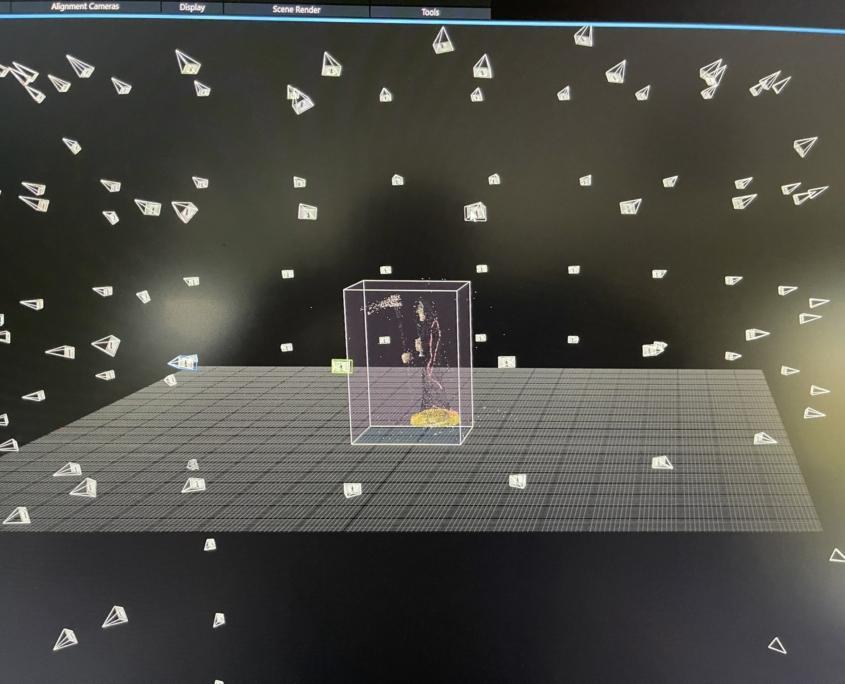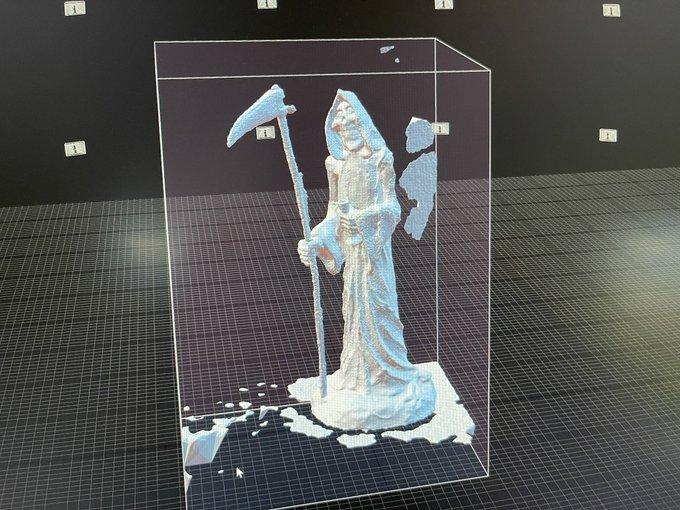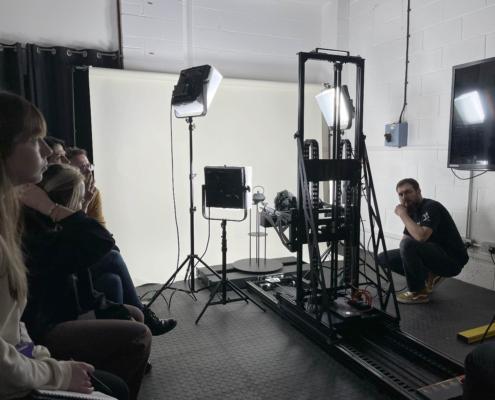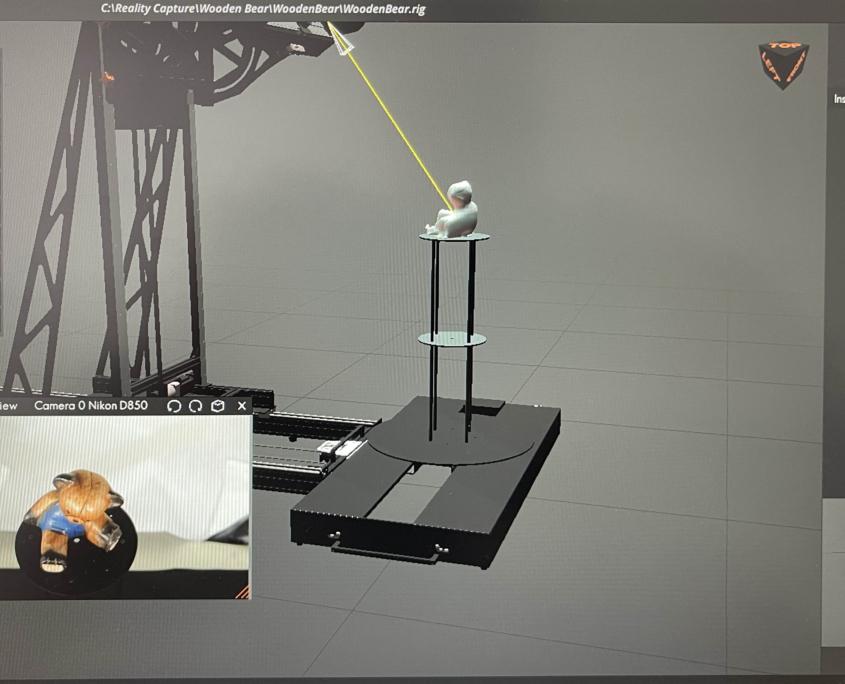Our 3D Digitisation Offer is taking shape…
During the winter, we’ve been working with our partners at Genus to hone our 3D capture skills and model making. Using a motion-controlled camera rig takes a lot of the manual labour out of capturing images for the photogrammetry, but there is a steep learning curve.
Over the past few years, Martin has been creating 3D models of objects using a manual process of photogrammetry. Using a traditional photography set-up of a tripod, lights, background and turntable, he has used a standard methodology of creating a sequence of concentric rings of images captured around an object from a fixed distance. Most people doing photogrammetry are familiar with this methodology. The result is hundreds of images of an object in 10° to 15° increments, with a large overlap between images.
Photogrammetry – the basics
Photogrammetry software works by examining images for their metadata (about focus distance, orientation, sequential filename, etc.) and comparing the features contained within each image of the object being photographed. The software places the photographs in a position in 3D space which approximates to the location where the image was captured. By replicating the concentric sequences of the images, the software can then determine the topology of the object by triangulating its features across all the images. To do this, each image must contain detail that can be found in the next image in the sequence, meaning that images should overlap each other by a significant amount (80-90%) in order for the process to be successful.
Once the images have been aligned, the photogrammetry software begins to build a 3D model mesh of the object. This process can take a long time, depending on how many images it is processing and the speed of the computer being used. At the end of this process, the software produces a mesh of the model, which can be cleaned up and made ready for the surface texture to be mapped onto it.
The Arago Motion-Control Rig
The Arago motion-controlled camera rig recently acquired by Genus offers a new and far more efficient way to capture precisely the amount of images necessary to create a model. The Arago not only takes photographs automatically, following instructions from the operator. While it can be programmed to take sequences of photographs, the Arago has a prescan function that uses an infra-red sensor to scan the object on the turntable and then calculate how many photographs to take and their positions.
The prescan tool makes the whole process of taking images very efficient as it calculates exactly how many images will be required to make a complete model using photogrammetry.
Why does the prescan matter?
The Arago’s prescan function matters because it means the operator no longer has to generate and plot the camera positions required. The prescan takes away the guesswork of where to place the cameras and where to direct them. The benefit is two-fold:
- Operator setup time is reduced by several minutes, perhaps even by as much as 15 minutes per object;
- Capture time is optimised. Without the prescan function, an operator may add hundreds of unnecessary camera positions, meaning minutes of extra capture time.
The Arago’s strongest attribute is its time-saving ability during the capture process. By shedding several minutes off an object’s capture time, we gain vital time to capture more objects. This is game-changing as it means we can reduce the time to capture, the cost of which is always passed onto the customer. Reduced capture time means a lower cost per model.
Practice makes perfect
Since its arrival in November, staff at Genus have received training from the team at Rigsters, the manufacturers of the Arago. Over the past two months, the team has been practising object capture using the Arago and then putting the resulting photographs through the processing software to create new models.
It’s been slow work as the cameras are producing 50 megapixels per shot. With hundreds of images per model, the processing time for a new model is lengthy.
In our next blog, we’ll look at what kinds of objects are suitable for the photogrammetry process and how we deal with difficult subjects.






